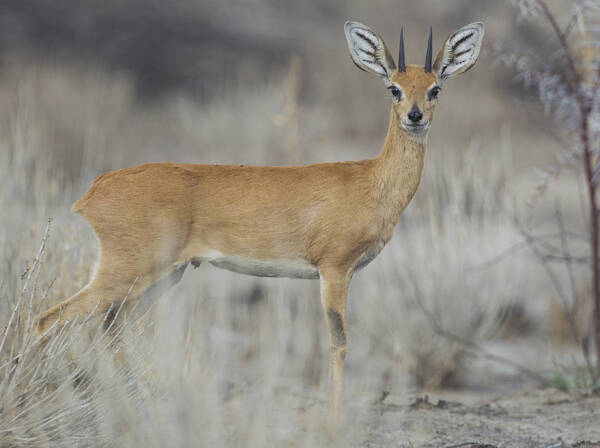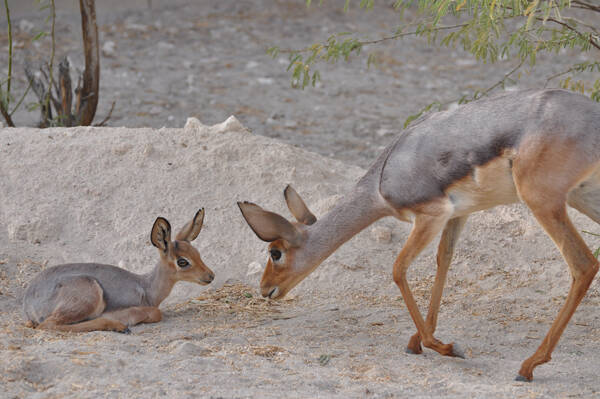Dorcatragus megalotis
IUCN
LCBasic Information
Scientific classification
- name:Dorcatragus megalotis
- Scientific Name:Dorcatragus megalotis,
- Outline:Ungulata
- Family:Artiodactylus Bovidae Oxtail
Vital signs
- length:80-86cm
- Weight:9-11.5kg
- lifetime:About 10 years
Feature
Distribution and Habitat
Origin: Djibouti and Somalia; presence uncertain: Ethiopia.
Inhabits steep flat-topped rocky hills and arid plateaus in northern Somalia, Djibouti and eastern Ethiopia. Frequently found on rocky or stony slopes and hills, the main vegetation being grassland mixed with acacia shrubs and some woody plants.
Appearance
The eland is an ungulate mammal. The body length is 80-86 cm, the shoulder height is 50-60 cm, the tail length is 6-7.5 cm, and the weight is 9-11.5 kg. The species is sexually dimorphic, with females tending to be larger and heavier than males. Only males have horns, which are 9-13 cm long and stand vertically from the sides of the ears pointing upwards to the head. The head is reddish-brown, with prominent black eyelids and white circles around the eyes. The most striking feature of this antelope is its very large ears, which are 15 cm long and 7.5 cm wide. The inside of the ears is covered with a layer of white hair. The fur on the upper body is reddish gray and the lower body is white. A dark stripe runs down the side from the elbow to the hind legs, clearly separating the two main colors. The legs are very long and thin, light yellowish brown in color.
Details
Dorcatragus megalotis (scientific name: Beira, Beira Antelope) is the only species in the genus Dorcatragus of the order Artiodactyla, family Bovidae, and has no subspecies.

Dorcatragus megalotis live in pairs or small groups, always led by a male. However, there are larger groups, which usually occur when family groups gather. The Eland, like most antelopes, does most of its activity in the morning and evening, resting in the midday. The species is very alert, with large ears and excellent hearing alerting them to the slightest noise, and will quickly move away when they sense danger, crossing loose stones at a swift speed, jumping from rock to rock boundary in a goat-like manner in steeper, safer areas.
The Eland mainly swims to feed, but will stop to graze when there is grass. They are adapted to arid climates and do not need to search for water, as they get everything they need from the plants they eat. They mainly feed on leaves of shrubs, as well as grass.

There is little information about the reproduction of the antelope. The calves of the antelope are only born in April every year, which is the peak of the rainy season. The gestation period is 6 months, and the female antelope only gives birth to one calf each year.
In 1999, the species population was estimated at 7,000 individuals, based on the assumption that the species population density is 0.2 individuals per km2 throughout the species and that it inhabits an area of approximately 35,000 km2. Most live in northern Somalia, which is relatively unaffected by the civil war/military conflict in other parts of the country. Its population may be decreasing in some areas where settlements are expanding and livestock density is high, but its population is probably stable in areas with few settlements. In Djibouti, the total population is estimated to be between 50-150 individuals (2004). In Djibouti, the antelope is confined to a limited area and its population may be declining due to desertification, overgrazing and disturbance from newly arrived refugees. In Somalia, the species population was significantly reduced during the 1975 drought (Simonetta 1988).
Listed in the IUCN Red List of Threatened Species in 2016 ver 3.1 - Vulnerable (VU).
Protect wild animals and eliminate game.
Maintaining ecological balance is everyone's responsibility!








